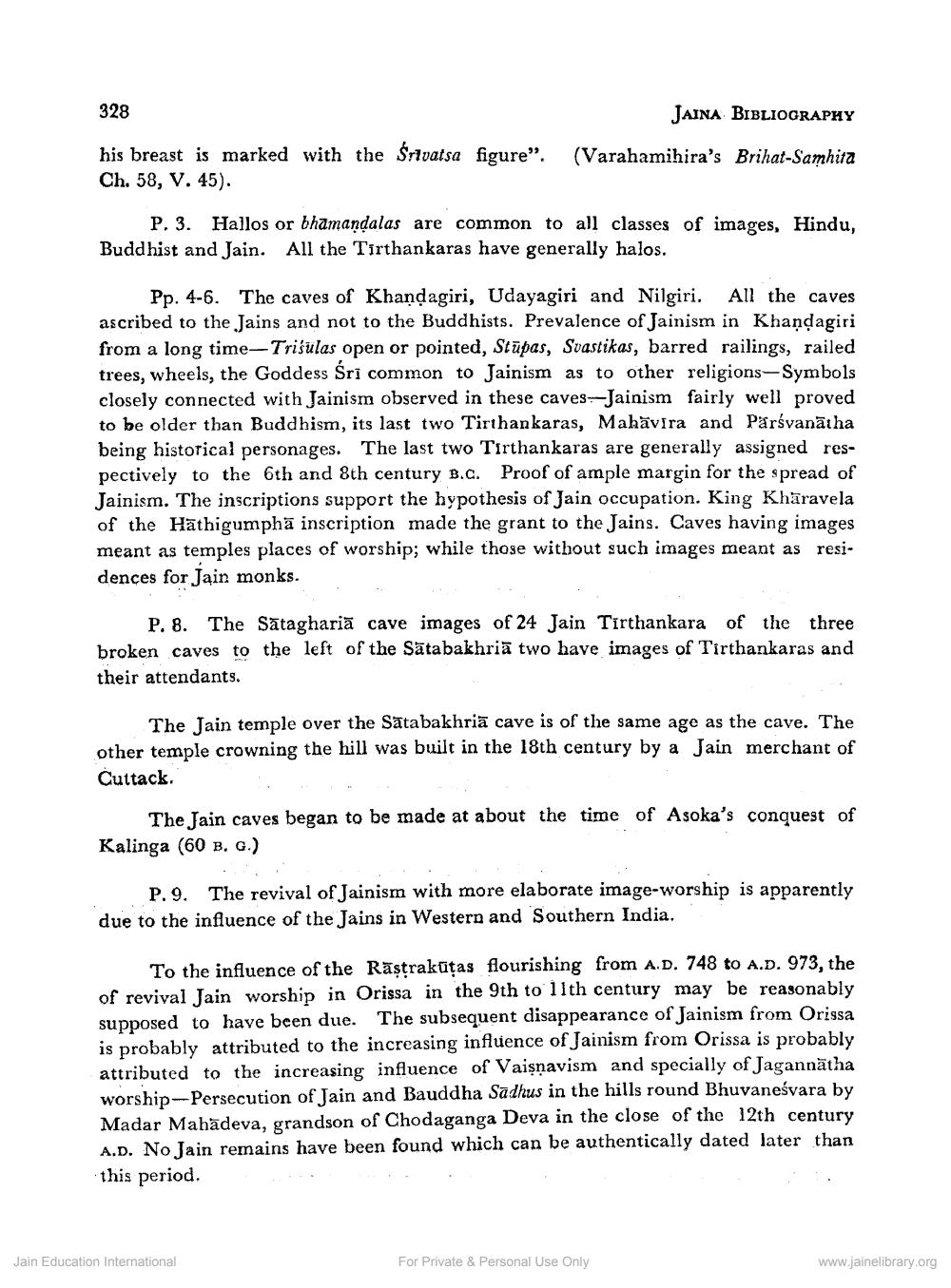________________
328
JAINA BIBLIOGRAPHY (Varahamihira's Brihat-Samhita
his breast is marked with the Śrīvatsa figure”. Ch. 58, V. 45).
P. 3. Hallos or bhamandalas are common to all classes of images, Hindu, Buddhist and Jain. All the Tirthankaras have generally halos.
Pp. 4-6. The caves of Khandagiri, Udayagiri and Nilgiri. All the caves ascribed to the Jains and not to the Buddhists. Prevalence of Jainism in Khandagiri from a long time-Trisulas open or pointed, Stūpas, Svastikas, barred railings, railed trees, wheels, the Goddess Sri common to Jainism as to other religions-Symbols closely connected with Jainism observed in these caves-Jainism fairly well proved to be older than Buddhism, its last two Tirthankaras, Mahāvīra and Parsvanātha being historical personages. The last two Tirthankaras are generally assigned respectively to the 6th and 8th century B.C. Proof of ample margin for the spread of Jainism. The inscriptions support the hypothesis of Jain occupation. King Khāravela of the Hāthigumphā inscription made the grant to the Jains. Caves having images meant as temples places of worship; while those without such images meant as residences for Jain monks.
P. 8. The Sātaghariā cave images of 24 Jain Tirthankara of the three broken caves to the left of the Sātabakhriā two have images of Tirthankaras and their attendants.
The Jain temple over the Sātabakhriā cave is of the same age as the cave. The other temple crowning the hill was built in the 18th century by a Jain merchant of Cuttack.
.
- - - -
The Jain caves began to be made at about the time of Asoka's conquest of Kalinga (60 B. G.)
P.9. The revival of Jainism with more elaborate image-worship is apparently due to the influence of the Jains in Western and Southern India.
To the influence of the Rästraküțas flourishing from A.D. 748 to A.D. 973, the of revival Jain worship in Orissa in the 9th to 11th century may be reasonably supposed to have been due. The subsequent disappearance of Jainism from Orissa is probably attributed to the increasing influence of Jainism from Orissa is probably attributed to the increasing influence of Vaisnavism and specially of Jagannatha worship-Persecution of Jain and Bauddha Sadhus in the hills round Bhuvaneśvara by Madar Mahadeva, grandson of Chodaganga Deva in the close of the 12th century A.D. No Jain remains have been found which can be authentically dated later than this period,
Jain Education International
For Private & Personal Use Only
www.jainelibrary.org




